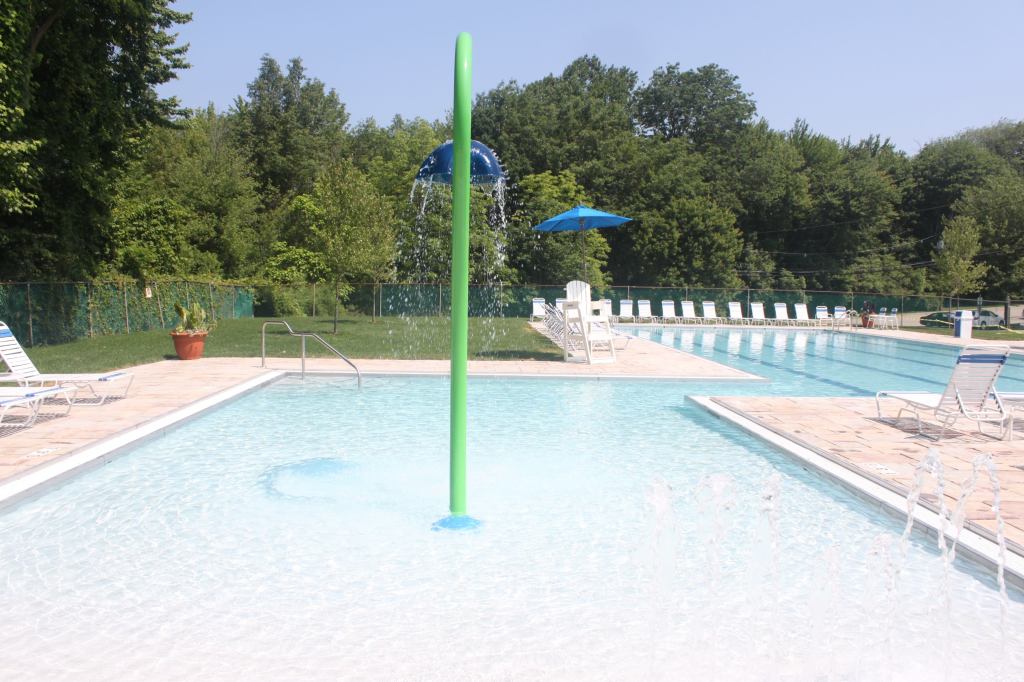As development heats up, most multifamily operators are likely to embrace smaller unit sizes and trade that square footage for blown-out amenity areas, particularly in urban and urban-esque submarkets anticipating a high proportion of Gen Y renters. In practice, that means keeping up with tony new Chicago developments for Marquette, including Alta at K Station, a Fifield Cos. development that packs in a 48,000-square-foot amenity deck called K2 Club that features a full-court indoor sports court. K2 also offers a resident lounge; party suite and private balcony equipped with outdoor seating and a grill; business center; stadium-style theater; locker rooms (each with a sauna); workout areas featuring iPod compatibility; and more. Alta also offers 24-hour maintenance, a guest services staff, and an on-site valet dry cleaner, and there are plans for a Blue Agave Restaurant and Tequila Bar to occupy 6,000 square feet of retail space in the building’s ground floor this fall.
At McLean, Va.–based Kettler, which has 18,000 units under management from New York to the Carolinas, property management president Cindy Clare says virtually all her operators are moving to make serious cap-ex investments now to keep pace with the communities of tomorrow. “Our clients are renovating common areas in part to increase the ability to both retain residents and push rents,” Clare says. “The newer developments are dialing down square footage and investing more in common areas to fit in tons of amenities to attract Gen Y renters but still be able to get them in at a rent they’ll be willing to pay.”
The Property Manager
When it comes to common-area renovations, property managers are your firm’s frontline commanders, managing both resident and on-site staff expectations while communicating critical project information to the executive staff (not to mention dealing with construction crews, landscapers, and the like). In any multifamily business model predicated on customer service, that means conveying an obvious residents-come-first concern. “Where the market has caused other people to not spend, we saw it as an opportunity to set ourselves apart from the competition and give our existing residents more reasons to stay with us,” says Jack Linefsky, vice president of property management for Clifton, N.J.–based Value Cos., an owner/operator of 3,700 units that just completed major pool and fitness center upgrades to several properties in northern New Jersey.
Linefsky and other property management veterans say residents are typically excited when major common-area upgrades are announced, and property managers can play a lead role in ongoing communications to keep that energy high when the construction equipment shows up (see “Say Again,” on page 38).
“We manage the conversation from the beginning, putting out fliers that say ‘coming soon,’ posting information on ‘here’s what’s happening,’ covering construction areas with signs that say ‘excuse our dust,’?” Linefsky says. “But most of our residents like to communicate with us electronically, so we also manage renovations with updates to our Facebook pages at each community and our corporate Facebook page.”
The Leasing Associate
At the end of the day, common-area investments are all about the prospect payoff. Luckily, leasing associates can use the opportunity before, after, and during construction to create excitement about a community and close sales. “Amenities don’t just become part of the overall statement of a community—good amenities are also great marketing tools,” says Jay McGarvey, owner of Jacksonville, Fla.–based McGarvey Residential, a boutique developer that just broke ground on a luxury amenities center for its Old San Jose on the River community. McGarvey credits the sale of half the community’s 18 luxury condos to the upgrade and says selling amenities is even more critical to leasing agents at apartment properties. “It’s really where amenities are a vital influencer, where they become a silent way to establish quality and credibility.”
Value Cos. used an expansion opportunity at one of its Middleton, N.Y., communities to collocate a new leasing office and state-of-the-art fitness center and pulled curious residents aside to look at photos, plans, and, oh, by the way, lease renewal status. “Our resident response was tremendous,” Linefsky says. Proving that when it comes to seriously upgraded community amenities, if you build it, the renters will come.
